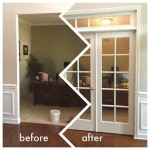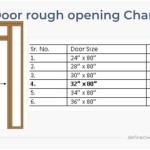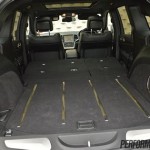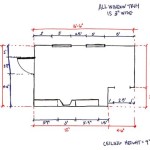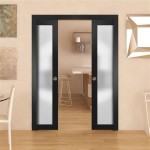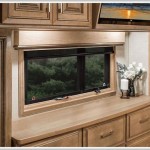Labor Cost to Replace Interior Door Hardware: A Comprehensive Guide
Replacing interior door hardware, such as knobs, levers, hinges, and strikes, is a common home improvement project. While seemingly simple, the labor cost associated with this task can vary significantly based on numerous factors. This article provides a detailed examination of the labor costs involved in replacing interior door hardware, outlining the factors that influence pricing and offering guidance on how to estimate the overall expense.
The labor cost to replace interior door hardware primarily covers the time and expertise required to remove the old hardware, prepare the door for the new hardware, and install the new components. The pricing structure for this service can be based on an hourly rate, a per-door rate, or a combination of both, depending on the complexity of the project and the professional performing the work. Understanding these costing models is crucial for budgeting accurately and avoiding unexpected expenses.
Factors Influencing Labor Costs
Several factors contribute to the labor cost of replacing interior door hardware. These elements can be broadly categorized as the type of hardware being replaced, the condition of the door and frame, the complexity of the installation, and the geographic location of the property.
The type of hardware significantly impacts the labor cost. Replacing a simple door knob with an identical model is generally a quick and straightforward task, resulting in lower labor charges. However, upgrading to a more complex system, such as a lever handle with a different backset or a smart lock, may require additional time and expertise, thereby increasing the labor cost. Smart locks, in particular, often involve wiring and programming, which demand specialized skills and potentially extend the installation timeframe.
The condition of the door and frame plays a crucial role in determining the labor cost. If the door frame is damaged, warped, or misaligned, the installer may need to make adjustments to ensure that the new hardware functions properly. This might involve shimming the frame, filling gaps, or even planing down sections of the door. Similarly, if the existing hardware has been installed improperly, leaving stripped screws or enlarged holes, additional time will be needed to repair these issues before installing the new hardware. Older doors, especially those made of solid wood, may also require more effort to remove old hardware due to corrosion or tight fits.
The complexity of the installation is another key factor. Simple replacements, where the new hardware matches the existing boreholes and backsets, typically incur lower labor costs. However, if the new hardware requires modifications to the door, such as drilling new holes or chiseling out mortises, the labor cost will increase. Some hardware may also require specialized tools or techniques, adding to the overall complexity of the installation. Retrofitting a modern handle set into an older door that was originally designed for a simple knob can be particularly challenging and time-consuming.
Geographic location also influences labor costs. Labor rates vary significantly across different regions and even within the same city, depending on factors such as the cost of living, demand for skilled tradespeople, and local market conditions. Metropolitan areas with higher living costs generally have higher labor rates than rural areas. It's advisable to obtain quotes from multiple professionals in the area to get a sense of the prevailing market rates.
Cost Breakdown and Estimations
Estimating the labor cost to replace interior door hardware requires a detailed understanding of the project's scope and the factors discussed above. A basic replacement of a door knob or lever can range from $50 to $150 per door, assuming no significant modifications are needed. This cost typically includes the removal of the old hardware and the installation of the new hardware, as well as minor adjustments to ensure proper functionality.
More complex installations, such as those involving smart locks or modifications to the door or frame, can range from $150 to $400 or more per door. The higher end of this range applies to projects requiring significant carpentry work, electrical wiring, or programming. For example, installing a smart lock often requires connecting the device to the home's Wi-Fi network and configuring user access codes, which can increase the installation time. Similarly, repairing a damaged door frame or chiseling out a new mortise for a strike plate can add several hours to the project, increasing the labor cost.
Hourly rates for handymen or carpenters skilled in door hardware replacement typically range from $50 to $100 per hour, depending on their experience and location. If the project is estimated to take several hours, hiring someone on an hourly basis may be more cost-effective than paying a per-door rate. However, it's important to obtain a clear estimate of the total hours required to avoid unexpected cost overruns. Professional locksmiths may also offer door hardware replacement services, and their hourly rates can be higher than those of general handymen, reflecting their specialized expertise.
When obtaining quotes, it's essential to ask for a detailed breakdown of the labor costs, including the hourly rate, the estimated time required, and any additional charges for materials or travel. A comprehensive quote will help to avoid misunderstandings and ensure that the final cost aligns with expectations. It's also crucial to inquire about the professional's experience and qualifications, as well as their insurance coverage and licensing, to ensure that the work is performed to a high standard and in compliance with local regulations.
Minimizing Labor Costs
Several strategies can be employed to minimize the labor costs associated with replacing interior door hardware. Planning the project carefully, preparing the work area, and selecting the appropriate hardware can all contribute to cost savings.
Careful planning is essential. Before hiring a professional, assess the condition of the doors and frames, identify any potential challenges, and select the new hardware that best meets the project's needs and budget. Consider purchasing hardware that closely matches the dimensions and specifications of the existing hardware to minimize the need for modifications. If unsure, take precise measurements of the existing hardware and consult with a hardware specialist to ensure compatibility.
Preparing the work area can also help to reduce labor costs. Clear the area around the doors, remove any obstructions, and provide adequate lighting. This will allow the installer to work more efficiently and avoid delays. If possible, gather all the necessary tools and materials in advance, so that the installer does not have to spend time searching for them. Protecting the surrounding surfaces, such as floors and walls, with drop cloths or plastic sheeting can also prevent damage and reduce the need for cleanup.
Choosing the right hardware can significantly impact the labor cost. Opting for high-quality hardware that is easy to install and durable can save time and money in the long run. Avoid purchasing cheap, poorly made hardware that may require frequent repairs or replacements. Consider reading online reviews and consulting with hardware experts to select hardware that is known for its reliability and ease of installation. When replacing multiple doors, consider purchasing hardware from the same manufacturer and in the same style to simplify the installation process.
Obtaining multiple quotes from different professionals is crucial for ensuring a competitive price. Contact several local handymen, carpenters, or locksmiths and request detailed quotes for the project. Compare the quotes carefully, paying attention to the hourly rates, the estimated time required, and any additional charges. Don't necessarily choose the lowest quote, as it may reflect lower quality workmanship or a lack of experience. Consider the professional's reputation, reviews, and references when making a decision.
Finally, consider performing some of the simpler tasks yourself to reduce the overall labor cost. For example, you could remove the old hardware and prepare the door for the new hardware before the professional arrives. This can save time and money, particularly if the removal process is straightforward. However, it's important to be honest about your own skills and limitations. If unsure about any aspect of the project, it's best to leave it to the professionals to avoid damaging the door or hardware.
In summary, the labor cost to replace interior door hardware is influenced by a complex interplay of factors, including the type of hardware, the condition of the door and frame, the complexity of the installation, and the geographic location. By understanding these factors and employing cost-saving strategies, homeowners can effectively manage the expenses associated with this common home improvement project. Obtaining detailed quotes, preparing the work area, and selecting the appropriate hardware are all essential steps in ensuring a successful and cost-effective outcome.

How Much Does Doorknob Installation Cost In 2025 Airtasker Us

Door Installation Cost Guide Interior Exterior Mr Handyman

How Much Does Doorknob Installation Cost In 2025 Airtasker Us

Internal Door Fitting Cost In 2025 Fitters Checkatrade

How Much Does It Cost To Install A New Door Knob Locksmith Las Vegas

Internal Door Fitting Cost In

Interior Door Replacement Cost In

How Much Does It Cost To Install A New Door Knob Locksmith Las Vegas

A Guide To Updating Your Doors And Hardware Jenna Sue Design

Interior Door Replacement Cost Interunet
Related Posts

